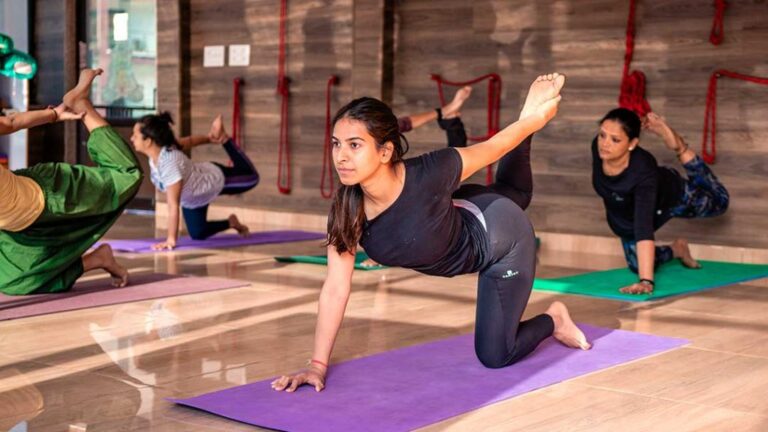Embarking on a Yoga Teacher Training (YTT) program is a transformative journey, offering both personal growth and the skills to guide others in their yoga practice. Whether your goal is to deepen your knowledge of yoga or pursue a career as an instructor, YTT requires dedication, preparation, and a clear understanding of what to expect. Here’s a comprehensive guide to help you navigate the essentials before you begin.
1. Understand Your Motivation
Before signing up, reflect on why you want to pursue YTT. Are you looking to deepen your practice, explore a spiritual path, or become a certified instructor? Your motivation will shape your experience and help you choose a program that aligns with your goals. Clarifying your intention ensures that you stay committed during the challenging moments of training.
2. Choose the Right Program
Yoga Teacher Training programs come in various styles, intensities, and formats.
Style of Yoga: Decide which type of yoga resonates with you the most—Hatha, Vinyasa, Ashtanga, Kundalini, Iyengar, or another style. Opt for a program that specializes in your preferred form.
Accreditation: Ensure the program is accredited by a recognized organization, such as Yoga Alliance. Accreditation ensures the training meets industry standards.
Format: Programs are offered in full-time (intensive) or part-time formats. An intensive YTT typically spans 4–6 weeks, while part-time options may take several months.
Location: Consider whether you want an immersive experience in a retreat-like setting or prefer to stay local and integrate training into your daily life.
Research thoroughly, read reviews, and talk to graduates to gain insights into the program’s quality and culture.
3. Evaluate Your Readiness
Yoga Teacher Training demands a combination of physical, mental, and emotional preparedness. Here’s how to assess your readiness:
Physical Fitness: While YTT is not about being super-flexible or achieving advanced poses, a consistent yoga practice of at least six months to a year is recommended. Familiarity with foundational poses will make the experience more manageable.
Time Commitment: A 200-hour YTT program requires a significant time investment, covering topics like anatomy, philosophy, and teaching techniques. Ensure you can dedicate the necessary hours to training and self-study.
Emotional Resilience: YTT often involves deep self-reflection and emotional release. Being open to vulnerability and growth will enhance your experience.
4. Understand the Curriculum
A typical YTT curriculum goes beyond asanas (poses) and includes:
Yoga Philosophy: Study ancient texts like the Yoga Sutras, Bhagavad Gita, and teachings on the eight limbs of yoga.
Anatomy and Physiology: Learn how the body functions and the principles of safe practice.
Teaching Methodology: Develop skills to sequence classes, provide adjustments, and create an inclusive environment.
Practicum: Practice teaching under the guidance of mentors and peers.
Meditation and Pranayama: Explore breathing techniques and meditation practices to complement physical postures.
Knowing what the training entails helps you set realistic expectations and prepare effectively.
5. Plan Financially
Yoga Teacher Training can be a significant investment. Costs vary widely based on factors like program duration, location, and accommodation. A 200-hour YTT typically ranges from $1,500 to $5,000, with additional expenses for travel, study materials, and certification fees.
To manage costs:
Look for early-bird discounts or scholarships.
Save in advance to avoid financial stress.
Choose programs offering payment plans.
6. Build Your Support System
YTT is an intense journey, and having a support system is invaluable. Share your plans with family and friends so they can encourage you during challenging times. Connect with fellow trainees to foster a sense of community and mutual understanding. Building these relationships can provide emotional strength and networking opportunities post-training.
7. Pack Essentials
Whether your program is local or a destination training, having the right gear and materials will enhance your experience. Essentials include:
Comfortable yoga clothing
A durable yoga mat
Notebook and pens for taking notes
Any required textbooks
Reusable water bottle and snacks
If attending a retreat-style program, research additional requirements like weather-appropriate clothing or personal items.
8. Cultivate an Open Mind
Yoga Teacher Training often challenges preconceived notions about yoga, your abilities, and yourself. Be prepared to:
Embrace feedback and learn from mistakes.
Approach lessons with curiosity and humility.
Let go of judgments and comparison with others.
This openness will allow you to grow both as a practitioner and a teacher.
9. Know What Comes Next
Completing YTT is just the beginning. Once certified, you can explore various paths, such as:
Teaching at studios, gyms, or wellness centers
Offering private sessions
Conducting online classes
Specializing in areas like prenatal yoga, yoga therapy, or children’s yoga
Continuing education and practice are crucial to refining your skills and staying updated with industry trends. Many instructors pursue advanced training (300 or 500 hours) to deepen their expertise.
10. Enjoy the Journey
Finally, remember that Yoga Teacher Training is a journey of self-discovery. It’s not just about mastering poses or earning a certification—it’s about finding your authentic voice as a teacher, connecting with a like-minded community, and fostering a lifelong love for yoga.

